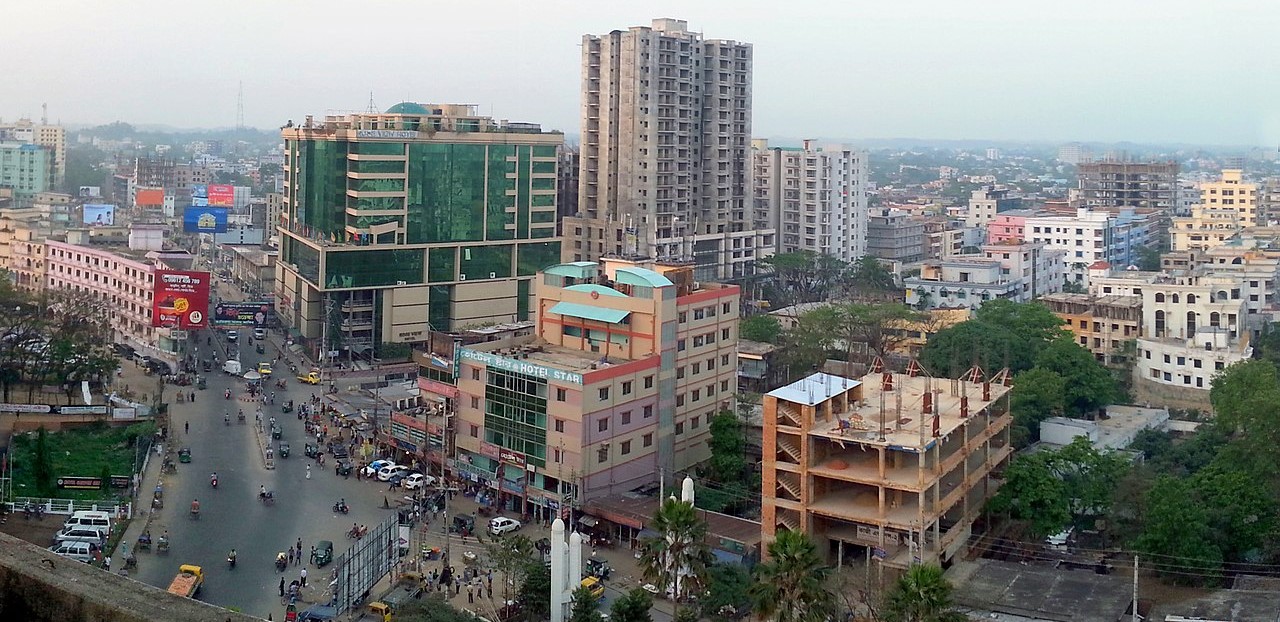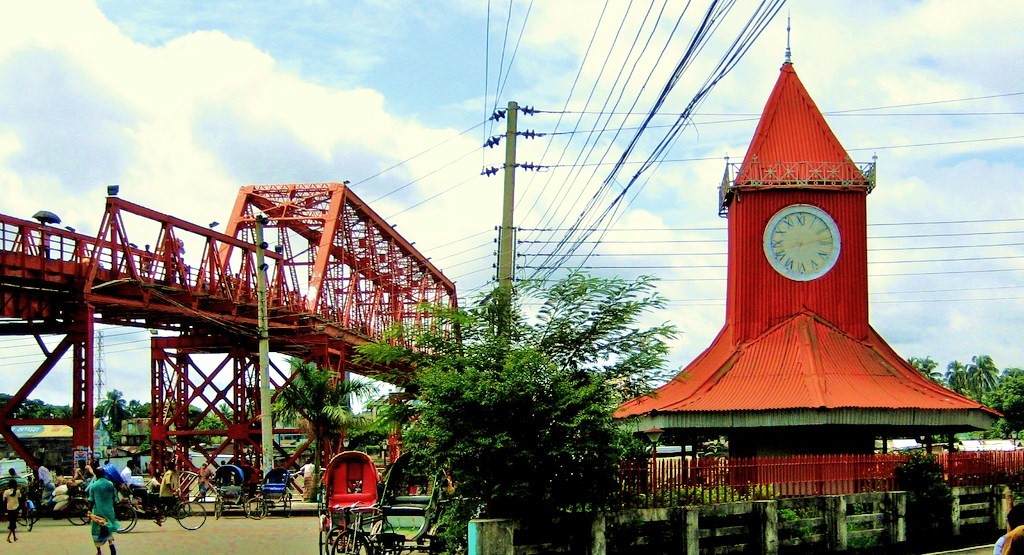Call for Papers
The 12th International Conference on Next Generation Computing, Communication, Systems and Security (12th NSysS 2025) aims to provide a forum for researchers, practitioners, developers, and users from academia, industry, and government to interact, present, and exchange new research ideas and results. NSysS 2025 will be held from December 18-20, 2025, in Sylhet, Bangladesh.
Special Invitations to Young Scientists!
We warmly invite undergraduate students engaged in research projects to submit papers, even if they are in the early stages or consist of preliminary results. Our conference provides thorough reviews and constructive feedback, with the possibility of senior researchers mentoring students to refine their work. This supportive environment ensures that students are not alone in their journey, helping them gain valuable experience, improve their research skills, and ultimately increase the likelihood of their work being published.
Important Dates
| Paper submission deadline [Extended and Final]: | September 15, 2025 (AoE) |
| Notification of paper acceptance: | November 07, 2025 (AoE) |
| Camera-ready content submission: | November 20, 2025 (AoE) |
| Poster submission deadline: | November 20, 2025 (AoE) |
| Notification of poster acceptance: | November 27, 2025 (AoE) |
| Program: | December 18-20, 2025 |
Scope
We invite submissions on a broad range of topics. The scope of the conference includes, but is not limited to, the following.
Network and Communication System Design
- Wireless, mobile, ad-hoc, and sensor networks
- Network theory
- Network science
- Networking layers and protocols
- Future internet design
- Multicast, broadcast, and anycast
- Multimedia protocols
- Network architectures
- Network management and traffic engineering
- Network function virtualization (NFV)
- Network simulation and emulation
- Optical networks
- Quality of service
- Resource allocation and management
- Satellite networks
- Software-defined networking (SDN)
- Topology characterization and inference
- 5G/6G Cellular and broadband wireless nets
- Cognitive radio networking
- Congestion control
- Cross-layer design and optimization
- Data reduction, inference, and signal processing
- Delay/disruption tolerant networks
- Semantic networking systems and protocols
- Experimental results from operational networks or network applications
- Near field communication
- Novel components, devices, and architectures for networked sensing
- P2P, overlay, and content distribution networks
- RFID networks and protocols
- Self-organizing networks
AI for Systems and Networks
- AI-driven Network Optimization
- Predictive Maintenance in Networks
- AI for Cybersecurity
- Intelligent Traffic Management
- Adaptive Network Protocols
- AI-enhanced Network Security Policies
- Machine Learning for IoT Networks
- AI-based Resource Allocation
- Autonomous Network Management
- AI for Edge Computing
- Deep Learning for Network Anomaly Detection
- AI in Network Function Virtualization (NFV)
- Machine Learning for Signal Processing
- AI for Wireless Network Management
- AI in Software-Defined Networking (SDN)
- Reinforcement Learning for Network Control
- AI for Quality of Service (QoS) Optimization
- AI-based Load Balancing in Networks
- AI for Network Traffic Prediction
- AI for Secure Communication Systems
- Data-driven system design
- Big data analytics
- Machine learning, data mining, and applications (e.g., cybersecurity, healthcare, and networks)
- Natural language processing (NLP) for systems
- Security and privacy of systems based on machine learning and AI
System Security
- Anti-malware techniques: detection, analysis, and prevention
- Cyber-crime defense and forensics
- Security for future Internet architectures and designs
- Implementation, deployment, and management of network security policies
- Integrating security in network protocols
- Cyber attack prevention, detection, investigation, and response
- Software/firmware analysis, customization, and transformation for systems security
- Privacy and anonymity in networks and distributed systems
- Security and privacy for blockchains and cryptocurrencies
- Security for cloud/edge computing
- Security and privacy of mobile/smartphone platforms
- Security for cyber-physical systems
- Security for emerging networks
- Security for large-scale, critical infrastructures
- Security of web-based applications and services
- Usable security and privacy
- Trustworthy computing software and hardware to secure networks and systems
Application-specific System Design
- Smart grid
- Mobile health
- Transportation
- Smart city
- Manufacturing
- Blockchain
- Mobile, participatory, and social sensing
- IoT and sensor technology
- Underground and underwater networks
- Unmanned air and ground vehicular networks
- Mobile computing
- Maritime Internet of Things
Computing Systems
- Computer architecture
- Cyber-physical systems and networking
- Operating systems and runtime environments
- Cloud and distributed systems
- Edge intelligence
- Embedded systems
- Digital twin systems
- Data centers
Low Power System
- Energy harvesting
- Energy optimization
- Power control and management
- Low-power, power-aware, and thermal-aware system design
- Energy-efficient, energy-aware, and thermal-aware software and application design
HCI System Development
- Human-computer interaction
- Social computing and networks
- Hardware, architectures, infrastructures, interaction design, technical foundations, algorithms to build new social and collaborative systems and experiences
Author Instructions
Authors are invited to submit papers describing original research of theoretical or practical significance. Submitted papers must describe work not previously published. They must not be submitted simultaneously to another conference with refereed proceedings or to a journal. The papers should be 6 to 8 pages (double column), including all figures, tables, appendices, and references in ACM format. Papers must be submitted in PDF format and formatted according to the new Standard ACM Conference Proceedings Template.
Information about formatting and style files is available online at https://www.acm.org/publications/proceedings-template.
The Overleaf template is available online at https://www.overleaf.com/latex/templates/acm-conference-proceedings-primary-article-template/wbvnghjbzwpc.
LaTex users have to use sample-sigconf.tex file as the template. If you prefer to use the Overleaf template, change the main document to sample-sigconf.tex file.
Word users have to use interim-layout.docx file as the template.
Only electronic submissions will be allowed. All papers submitted to the 12th NSysS 2025 need to be double-blind, i.e., no author name should appear in the submitted papers. There must not be any references that may reveal the author’s identity.
Important note to authors about the new ACM open access publishing model
ACM has introduced a new open access publishing model for the International Conference Proceedings Series (ICPS). Authors based at institutions that are not yet part of the ACM Open program and do not qualify for a waiver will be required to pay an article processing charge (APC) to publish their ICPS article in the ACM Digital Library. To determine whether or not an APC will be applicable to your article, please follow the detailed guidance here: https://www.acm.org/publications/icps/author-guidance.
Further information may be found on the ACM website, as follows:
Full details of the new ICPS publishing model: https://www.acm.org/publications/icps/faq
Full details of the ACM Open program: https://www.acm.org/publications/openaccess
Please direct all questions about the new model to icps-info@acm.org.
Paper Submission Link
All papers will be submitted to the Microsoft CMT Submission Portal.
Paper submission link: https://cmt3.research.microsoft.com/NSysS2025
Acknowledgement
The Microsoft CMT service was used for managing the peer-reviewing process for this conference. This service was provided for free by Microsoft and they bore all expenses, including costs for Azure cloud services as well as for software development and support.





